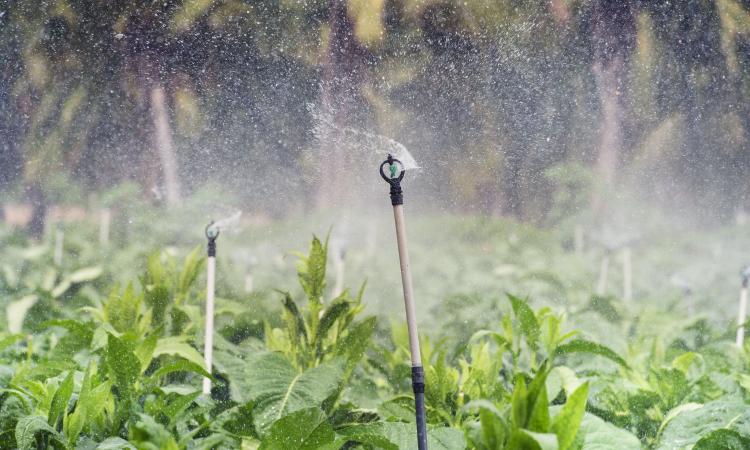
A new development from a US university - a gel that can absorb water from humidity in the air, before releasing it back into the soil - could help farmers struggling to cope with the effects of drought.
Although climate change has drastically increased rainfall in some regions, in others it has led to unseasonal dry spells and more frequent droughts. These factors, combined with a growing population and limited water resources, have introduced substantial challenges to the world’s dryland farmers.
Now one US university is researching ways to help ease this burden and increase the growing potential of dry and arid soil. Researchers at the University of Texas in Austin have developed a new type of gel that is able to draw ambient water from the air and store it within the soil.
The gel, dubbed a super moisture-absorbent gel (SMAG), consists of hygroscopic polymers that can be mixed in with dry, sandy soils to improve water retention, even over long periods. In arid regions, the air is generally dry during the day, although as it cools at night the levels of ambient humidity increase. This water is then captured by the gels and stored in the soil.
Since the gels have also been designed to be thermally responsive, the rising temperatures throughout the daytime release the stored liquid water into the soil, acting as additional irrigation. Part of the water may also evaporate, increasing humidity above the ground and cooling the surrounding plants.
In 2020, the team carried out experiments with the gels in artificially dried-out and sandy soils. Their results, published in ACS Materials Letters, showed that each gram of dry soil mixed with the SMAG could absorb as much as four grams of water from the air - when exposed to high humidity conditions. This is around two orders of magnitude higher than non-mixed soil.
The experiment was also carried out under lower humidity conditions to better simulate a typical dryland habitant. In these conditions after a month of observation the gel had retained 40 per cent of its initial water content, while the non-mixed soil only retained 20 per cent.
The team then investigated how well plants could actually grow in these environments and planted radishes in both the SMAG-mixed and non-mixed soil. After giving them an initial watering, the seeds in the gel-enriched soil germinated within two days and grew for 14 more before requiring additional water.
Meanwhile, although the seeds in the plain soil did germinate, all the plants had withered and died within six days. Armed with these results, the researchers concluded that 0.1 to 1 kilogram of SMAG-soil could provide enough irrigation for a square metre of farmland - depending on the crop.
Dealing with drought
It is hoped such innovations could provide a lifeline to farmers struggling to cope with the increased frequency of droughts, as well the communities around them. Water absorbent gels could be used to extend agriculture into drier regions as well as make farmers less dependent on traditional means of irrigation.
These often require large amounts of water, which is then directed away from other uses and communities. The World Health Organisation estimates that around 40 per cent of the world’s population are at risk from water scarcity.
The trends towards the increase in dry areas is especially observable in Africa, East and South Asia, eastern Australia, southern Europe and northern South America. However, even traditionally cold and wetter regions are drying out, including Alaska and western Canada.
According to one study, the Earth’s dry areas have doubled since 1970 creating new challenges for farmers in the world’s more arid regions. Furthermore, when rainfall does occur in these regions, it often occurs as part of short, heavy precipitation events, as opposed to semi-consistent light and moderate rains.
Such deluges can only provide short term irrigation benefits, and also runs the risk of damaging crops and oversaturating soils. With drylands accounting for 45 per cent of the world’s agricultural land use, it is essential to make them more resilient to climate change - especially in light of growing regional populations.
The gel is also not necessarily limited to agricultural uses. The team has speculated that it could be used to limit desertification and re-vegetate some areas.
Additionally, it could be used to cool solar panels for data centres, as well as increase access to drinking water.
However, there is still work to be carried out regarding super moisture-absorbent gels. After their initial success, the team is looking at how other natural factors, such as wind, affect the gels capabilities, as well as if it affects nutrient flows in the soil.
The article first appeared in RESET - Digital for Good here